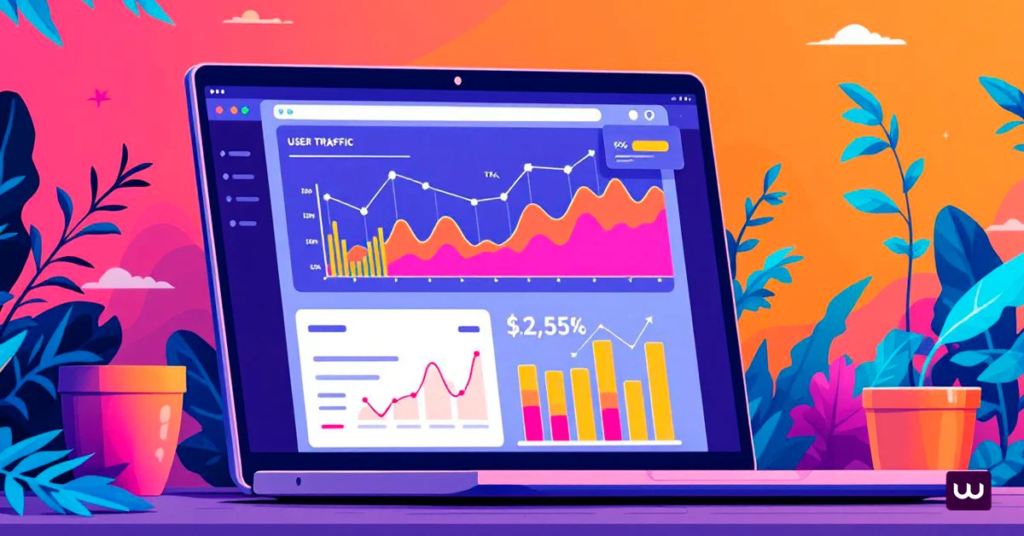
To ensure the success of your online store, embracing SEO is crucial. It acts as the secret ingredient that allows your business to stand out in a bustling digital marketplace. By implementing effective ecommerce SEO strategies, you can attract more visitors, enhance your visibility, and convert clicks into sales. Organic traffic is not only cost-effective but also a game-changer for achieving sustained success.
One crucial aspect of this strategy is to optimize product pages, which can significantly enhance search rankings and attract more customers.
In today’s competitive landscape, mastering SEO for ecommerce is no longer optional. It is the key to staying ahead and expanding your business. By optimizing your ecommerce site, you not only improve search engine rankings but also create a sustainable growth path for your ecommerce business. Investing in SEO is essential for thriving in the digital marketplace.
What is Ecommerce SEO?

Definition of ecommerce SEO
Ecommerce SEO focuses on boosting your online store’s visibility on search engines. The objective is to have your store appear prominently when potential customers search for products you offer. This is where ecommerce SEO becomes essential, as it enhances your rankings organically, eliminating the need for paid ads. By optimizing your ecommerce site, you can attract more organic traffic, enabling shoppers to find your store naturally through search engines.
This process involves crafting content that matches user search queries and refining technical elements like page loading speed to improve user experience. The importance of ecommerce SEO for online stores is undeniable. It serves as a pivotal strategy for driving organic traffic and ensuring sustainable growth. Unlike paid ads, which stop delivering results once you cease investing, organic traffic persists as long as your site maintains strong rankings.
A notable example is Ruggable, which prioritized ecommerce SEO and saw their organic traffic surpass paid campaigns, leading to increased visitors and sales. By focusing on SEO for ecommerce, businesses can achieve similar outcomes, securing long-term growth and a solid foothold in the digital marketing strategy.
Importance of ecommerce SEO for online stores
If you operate ecommerce stores, overlooking SEO is not an option. It serves as a transformative tool for driving organic traffic and ensuring sustainable growth. Unlike paid ads that cease to deliver results once you stop investing, organic traffic continues to flow as long as your website maintains strong rankings. Consider the example of Ruggable, which focused on ecommerce SEO and witnessed their organic traffic outperform paid campaigns.
This strategic emphasis not only attracted more visitors but also significantly boosted sales. By dedicating resources to SEO for ecommerce, you can achieve similar outcomes, ensuring long-term growth and success. Ecommerce SEO is a long-term growth strategy that directly impacts your business’s bottom line. By ranking high for valuable keywords, you increase your site’s visibility and attract more customers.
Optimizing your site facilitates easier access for shoppers to find your products, leading to increased traffic and ultimately more sales. Ecommerce SEO goes beyond just improving rankings; it builds a sustainable path to success for your ecommerce store. Investing in SEO is crucial for thriving in the digital marketplace, paving the way for continuous growth and a robust digital marketing strategy.
Benefits of ecommerce SEO for businesses
Ecommerce SEO is a strategic approach that offers a sustainable path to growth for your business. By ranking high for valuable keywords, your site gains increased visibility, attracting more potential customers and directly impacting your bottom line. When your ecommerce site is optimized, it becomes easier for shoppers to discover your products, leading to a boost in traffic and ultimately, more sales.
This approach isn’t solely about achieving high rankings; it’s about crafting a long-term success strategy for your ecommerce store. By focusing on ecommerce SEO, businesses can build a robust foundation for sustained growth. This strategy goes beyond mere rankings, ensuring that your site is easily accessible and appealing to potential customers.
As a result, your ecommerce store not only draws more visitors but also enhances the likelihood of conversions. Investing in SEO is not just a choice; it’s a necessity for thriving in the competitive digital marketplace, paving the way for continuous growth and a solid digital marketing strategy.
How Search Engines Work

Understanding search engine algorithms
Search engines operate using complex algorithms to determine which web pages appear when users search for specific information. These algorithms function like secret recipes, assessing the relevance and utility of a page based on various factors such as keywords, content quality, and user experience. For instance, Google frequently updates its algorithm with changes like Panda, Penguin, and BERT.
Understanding these algorithms is crucial for improving your visibility on the search engine results page (SERP), which directly impacts customer engagement and sales. These updates aim to enhance search results, necessitating that e-commerce sites remain vigilant and adapt to maintain their success. Understanding these algorithms is fundamental for ecommerce SEO, as it lays the groundwork for optimizing your online store’s visibility. To ensure your e-commerce site thrives, comprehending how search engines evaluate and rank pages is essential. This knowledge allows you to align your content and technical elements with the criteria that search engines prioritize.
By doing so, you improve your chances of ranking higher in search results, thus attracting more organic traffic. Ecommerce SEO isn’t just about incorporating keywords; it’s about creating a seamless user experience and maintaining high-quality content that resonates with both search engines and potential customers.
How search engines crawl and index ecommerce websites
Search engines utilize sophisticated bots, known as crawlers, to meticulously scan your ecommerce site, navigating through links and analyzing content to comprehend the essence of your site. This scanning process is pivotal as it leads to the indexing of your pages, storing them in an extensive database. If your pages aren’t crawled or indexed, they won’t appear in search results, making this process crucial for your ecommerce site.
To facilitate effective crawling and indexing, it’s important to maintain a clear site structure, employ proper URLs, and steer clear of duplicate content. These efforts are integral to a successful ecommerce SEO strategy. The significance of search engine optimization for ecommerce sites is immense. SEO elevates your site’s position in search results, enhancing visibility and driving more organic traffic.
For ecommerce businesses, this can translate into a substantial increase in sales. SEO encompasses much more than merely inserting keywords into product pages; it involves refining site structure, boosting speed, and enhancing content. These improvements not only create a superior user experience but also contribute to business growth. Investing in SEO for ecommerce is indispensable for achieving long-term success in the digital marketplace.
Importance of search engine optimization for ecommerce sites
Search engine optimization is the key to elevating your site’s position in search results, ensuring that more potential customers discover your e-commerce business, which can significantly boost your sales. SEO goes beyond merely incorporating keywords into your product pages; it involves enhancing your site’s structure, speed, and content.
When executed effectively, SEO not only improves the user experience but also drives business growth. For those seeking long-term success in the digital marketplace, investing in SEO for e-commerce is indispensable. By focusing on SEO, you create a more seamless and enjoyable experience for your customers, which in turn helps your business thrive.
Optimizing your site ensures that it is not only user-friendly but also easily navigable by search engines, leading to increased organic traffic. This strategic approach positions your e-commerce store for sustainable growth and success, making SEO an essential component of your digital marketing efforts.
Ecommerce Keyword Research

How to find keywords for ecommerce product and category pages
Identifying the right keywords is the initial step in ecommerce keyword research. These keywords are the terms or phrases that potential customers type into search engines when they’re looking for products similar to what you offer. By targeting these specific terms, you can enhance the visibility of your e-commerce site to attract potential customers.
Begin by concentrating on your ecommerce product pages and category pages, as they form the core of your store. It’s crucial to optimize these pages with relevant keywords. Tools such as Google Keyword Planner, Ahrefs, or SEMrush can be invaluable in uncovering the terms your audience is actively searching for. Look for keywords that strike a good balance between search volume and competition.
Additionally, utilizing tools and features from platforms like Google and Amazon can generate valuable keyword ideas. Features like autocomplete and competitor research can help you uncover keyword opportunities. Consider what your customers might enter into the search bar. Are they seeking “affordable running shoes” or “luxury handbags”? Once you’ve identified these terms, you can use them strategically to boost organic traffic and attract the right audience.
This approach ensures that your ecommerce site not only appears in search results but also reaches the audience most likely to convert into customers. By focusing on these steps, you can effectively drive more traffic to your site and increase sales.
How to choose keywords for ecommerce product and category pages
Choosing the right keywords is crucial for effective ecommerce SEO, as not all keywords are created equal. To select the best ones, follow a straightforward four-step checklist. First, assess the search volume. High-volume keywords can drive more traffic, but they often come with increased competition.
Second, evaluate the competition level. If a keyword is overly competitive, ranking for it may prove challenging. Third, consider the relevance of the keyword. It should accurately reflect your product or category pages. Lastly, contemplate user intent. Determine whether people are searching with the intent to buy, learn, or compare.
By narrowing down your keyword options, you can focus on those that align with your ecommerce goals, ensuring your efforts reach the right audience and yield meaningful results. This strategic approach allows you to target specific terms that not only enhance your visibility in search engine results but also attract potential customers who are most likely to convert.
Ultimately, this method helps you generate more organic traffic and increase sales, positioning your brand actively.
Keyword targeting and page optimization
Once you’ve selected your target keywords, it’s time to strategically implement them to enhance your ecommerce SEO efforts. Begin by researching your chosen keyword and examining the top 10 search results. This analysis provides valuable insights into what is currently ranking and highlights areas where you can make improvements.
Next, focus on optimizing your category and product pages by incorporating these keywords into titles, meta descriptions, and headers. Ensure that the keywords are naturally woven into your content for a seamless user experience. This approach not only helps you surpass competitors but also increases organic traffic.
By prioritizing keyword targeting and page optimization, you can transform your ecommerce site into a powerful traffic magnet, attracting more visitors and ultimately boosting sales.
Ecommerce Site Architecture

The two “golden rules” of ecommerce site architecture
When it comes to your e-commerce site, simplicity is your best friend. A clean and straightforward design makes it easier for both users and search engines to navigate. You want your site to grow with your business, so scalability is key. Think of it like building a house—you need a strong foundation that can handle future expansions.
Here’s a golden rule: no page on your site should take more than three clicks to reach from the homepage. Users dislike digging through endless menus to find what they need, and search engines prefer a clear path to your content. This approach improves user experience and helps your site rank better.
How to create an SEO-friendly website architecture
Ecommerce site architecture is critical for SEO, as it influences how search engines crawl and index pages. A well-organized structure ensures that crawlers can easily locate and index your pages, increasing the likelihood of your products appearing in search results.
A simple yet scalable site architecture is not only beneficial for users but also enhances your SEO efforts. When your site is easy to navigate, search engines can crawl it more efficiently, and a scalable design allows for the seamless addition of new products or categories without disrupting the site’s flow.
Additionally, using a clear and consistent URL structure is paramount. URLs should be as straightforward as your navigation. For instance, a URL like yourstore.com/shoes/running is far more effective than a cryptic one like yourstore.com/p12345. Clear URLs aid both users and search engines in understanding the content of each page, thereby supporting a successful ecommerce SEO strategy.
Importance of website structure for ecommerce SEO
Website structure is crucial for ecommerce SEO, as it helps search engines understand the content and organization of the website. Think of your ecommerce website structure as a roadmap that guides search engines through your site, highlighting what’s important. A well-structured site ensures that your products receive the visibility they deserve, making it easier for search engines to rank your pages.
This means more people will find your products when they search online. Additionally, a good structure doesn’t just aid with rankings; it also keeps visitors on your site longer, increasing the likelihood of purchases. A well-organized website can significantly enhance search engine rankings and drive more traffic.
When your site is neatly arranged, it becomes easier for search engines to navigate and rank your pages effectively. This organized layout not only improves rankings but also enhances user experience, keeping visitors engaged and increasing the chances of conversion. As a result, a well-structured ecommerce site not only draws more visitors but also boosts sales by providing a seamless shopping experience.
Technical SEO for Ecommerce

How to run a technical SEO audit on an ecommerce website
Conducting an ecommerce SEO audit may seem daunting, but it’s a manageable process that can significantly improve your site’s performance. Begin by utilizing a site audit tool like Semrush. This tool scans your website for technical SEO issues that could be hindering your search engine rankings, providing a comprehensive checklist of areas needing attention.
The scan results in a prioritized list of errors, allowing you to focus on the most impactful problems first, such as broken links, slow-loading pages, or duplicate content. Regular SEO audits are essential for maintaining a healthy and high-performing online store. They enable you to identify and resolve technical issues before they negatively affect your site’s visibility and organic traffic.
Think of it as routine maintenance for your ecommerce platform—just as regular car maintenance keeps your vehicle running smoothly, consistent SEO audits ensure your website remains optimized for search engines and continues to attract potential customers.
Common technical SEO issues for ecommerce sites
Several technical SEO issues frequently plague ecommerce websites. Duplicate content is a common culprit, often occurring when product descriptions are used across multiple pages. This can confuse search engines, making it difficult for them to determine which page to rank.
Canonicalization issues also arise when multiple URLs point to the same content, diluting ranking signals and potentially leading to duplicate content penalties. Beyond content and URLs, HTTPS is a critical component of technical SEO. A secure website not only protects user data but also serves as a positive ranking signal for search engines.
Failing to implement HTTPS can negatively impact your rankings and erode customer trust. Finally, mobile responsiveness is paramount in today’s mobile-driven world. With a significant portion of online shopping occurring on smartphones, ensuring your website provides a seamless and user-friendly experience on smaller screens is essential for both SEO and customer satisfaction.
How to fix technical SEO issues for ecommerce
Addressing technical SEO issues doesn’t have to be a daunting task. A good starting point is to focus on common problems like 404 errors (broken links), 302 redirects (temporary redirects used incorrectly), and duplicate content. Tools like Google Search Console and Semrush are invaluable for identifying these issues across your website.
These platforms provide detailed reports and insights, making it easier to pinpoint the specific areas that need attention. Once you’ve identified the technical SEO problems, it’s time to take action. This might involve fixing broken links, updating redirects to the correct URLs, and rewriting or consolidating duplicate content.
Ensuring your site uses HTTPS is also crucial for both security and SEO. Regular monitoring of your website using the aforementioned tools will help you catch new issues early on, preventing them from impacting your site’s performance. By proactively addressing technical SEO challenges, you’ll create a smoother and more positive experience for your customers while simultaneously improving your site’s search engine rankings—a win-win for your ecommerce business.

A “perfectly optimized” ecommerce page
Optimizing a webpage is akin to designing an inviting storefront—it’s about capturing attention and encouraging visitors to explore. Begin with a clear and concise title that accurately reflects the page’s content, instantly informing users what to expect. Craft a compelling meta description that entices users to click your link in search results; this short snippet is their first impression of your page.
Utilize header tags (H1, H2, etc.) to structure your content logically, improving readability for both users and search engines. Beyond the technical elements, high-quality, relevant content is paramount. Focus on addressing your customers’ needs and answering their questions thoroughly. Strategic internal linking is also crucial.
By linking related pages within your site, such as connecting a product page to its corresponding category page, you enhance user engagement and help search engines better understand the relationships between different sections of your website. This holistic approach to on-page optimization creates a positive user experience and improves your site’s search engine visibility.
How to optimize ecommerce product pages
Optimized product pages are the lifeblood of any ecommerce website, and optimizing them effectively is crucial for driving sales. Keyword optimization is a key component of this process. Strategically incorporate relevant keywords into your product titles, descriptions, and even image alt text. However, it’s essential to maintain a natural tone and avoid keyword stuffing, which can be detrimental to user experience and search rankings.
High-quality content is equally important. Craft product descriptions that not only highlight the features but also emphasize the benefits, addressing common customer questions and showcasing the value proposition of your products. Internal linking plays a vital role in both SEO and sales. By linking related products or categories together, you create a seamless browsing experience for your customers and encourage them to explore more of your offerings.
For example, if a customer is viewing a particular jacket, linking to matching pants or complementary accessories can significantly increase the likelihood of additional purchases. This practice not only improves your site’s internal linking structure, which benefits SEO, but also boosts sales by making it easy for customers to discover related items they might be interested in.
Importance of content marketing for ecommerce SEO
Content marketing is a powerful, often underutilized, tool in the SEO arsenal. It’s not just about promoting products; it’s about building genuine connections with your target audience and fostering trust in your brand. Utilizing various content formats, such as engaging videos, informative blog posts, or personalized email newsletters, allows you to reach your audience where they are and provide valuable information.
For example, creating a blog post demonstrating how to style a particular product you sell not only showcases the item but also positions you as a helpful resource, building credibility and encouraging interaction. This content-driven approach significantly increases your online visibility and drives targeted traffic to your website.
Furthermore, it keeps your audience engaged and coming back for more, nurturing relationships and transforming casual visitors into loyal customers. When executed effectively, content marketing becomes a win-win for your ecommerce business, boosting both brand awareness and sales.
Content Marketing for Ecommerce

How to create an outstanding piece of content around a keyword
Creating content that stands out requires aiming to make it the best available, and the Skyscraper Technique is a fantastic approach to achieve this. Start by identifying content that is already performing well for your target keyword, then take it a step further by adding more value, providing fresh insights, or presenting it in a more engaging manner.
It’s crucial to ensure that your content is optimized for the target keyword by naturally incorporating it into the title, headers, and throughout the text without overstuffing. The goal is to make your content not only helpful and relevant but also appealing to readers and search engines alike. Incorporating internal linking is a simple yet powerful strategy that enhances your site’s SEO and user experience.
By linking your new content to other relevant pages on your site, such as related product or category pages, you encourage visitors to explore further and engage more deeply with your offerings. This not only improves your SEO by helping search engines understand the structure and relevance of your content but also keeps users on your site longer, increasing the likelihood of conversions and sales.
Utilizing user-generated content (UGC) for ecommerce
User-generated content (UGC) can significantly elevate engagement, foster trust, and extend users’ time on your site. By encouraging your customers to share their experiences, you can transform your platform into a more engaging space. Reviews, photos, and videos created by users not only make your site more interactive but also build trust, as people value authentic opinions from fellow shoppers.
Moreover, UGC adds fresh and unique content to your site, which search engines favor. This variety helps search engines perceive your site as active and relevant, enhancing your search rankings.To harness the power of UGC, actively encourage customers to leave reviews or share photos of your products in action.
You might even consider running contests or offering incentives to motivate more people to participate. This approach not only enriches your site’s content but also strengthens your connection with your audience, ultimately driving more traffic and boosting sales.
Importance of blogging for ecommerce SEO
Blogging is an effective form of content marketing that leverages both on-page and technical SEO strategies to enhance your website’s search visibility. Each blog post provides an opportunity to target new keywords and draw more visitors to your e-commerce site. By consistently publishing informative and relevant blog posts, you demonstrate to search engines that your site is a valuable resource, which can improve your rankings and increase organic traffic.
This approach not only boosts your site’s credibility but also helps you connect with your audience on a deeper level. When crafting blog content, consider what your audience is eager to learn. Focus on writing posts that answer their questions or solve their problems. For instance, if your e-commerce business sells fitness gear, you could create content around workout tips or product comparisons.
Blogging enables you to engage with your target audience effectively, keeping them coming back for more while establishing your brand as an authority in your niche. This strategy not only enhances your online presence but also fosters a loyal customer base, ultimately driving more traffic and boosting sales.
Link Building Strategies for Ecommerce

How to build high-quality links for ecommerce
Earning high-quality backlinks is a crucial element of a successful ecommerce SEO strategy, acting as endorsements from other reputable websites. These links signal to search engines that your site is trustworthy and provides valuable content, ultimately boosting your rankings and driving organic traffic. Building these valuable links requires a strategic approach.
One effective method is resource page link building. Many websites curate resource pages related to specific industries, and if your site offers something valuable, such as a unique product or insightful content, you can reach out to the site owner and request to be added to their list. Influencer marketing is another powerful tactic. Collaborating with influencers in your niche can expose your brand to a wider audience, as they often have a strong online presence and can link back to your site, increasing your visibility.
Guest posting on relevant industry blogs is another valuable strategy. By writing informative and engaging content for other websites and including a link back to your ecommerce store, you can gain valuable backlinks and reach a new audience. Tools like Ahrefs can be instrumental in identifying link-building opportunities and tracking the progress of your link-building campaigns. With a consistent and well-planned approach, link building can significantly improve your website’s authority, drive more traffic, and ultimately boost sales.
Resource page link building for ecommerce
Resource pages are a goldmine for link building, offering a targeted approach to acquiring high-quality backlinks. These curated lists of helpful links and tools cater to specific audiences, making them ideal places to showcase your ecommerce site if you offer something valuable. Whether it’s a unique product, a helpful guide, or insightful content related to the page’s focus, pitching your site for inclusion can be highly beneficial.
For example, if you sell eco-friendly products, seek out resource pages dedicated to sustainability, environmentalism, or green living. Reach out to the page owner, clearly explaining why your site would be a valuable addition to their list. This targeted outreach not only improves your search engine rankings but also connects you directly with your target audience, driving relevant traffic to your online store.
Partnering with influencers for ecommerce link building
Influencer marketing can be a game-changer for your ecommerce SEO strategy. Influencers, individuals with a substantial following or high-authority websites within your niche, can significantly impact your brand’s visibility and reach. When they link to your site, it’s akin to receiving a valuable endorsement, boosting your site’s credibility in the eyes of search engines.
To leverage the power of influencer marketing, begin by identifying influencers whose audience and values align with your brand. For example, if you sell fitness products, target fitness bloggers, social media personalities, or athletes. Reach out to these influencers and propose a mutually beneficial partnership.
This could involve product reviews, sponsored content, or featuring your products in their existing content. Such collaborations not only provide valuable backlinks to your site but also introduce your brand to a wider, highly engaged audience, expanding your reach and potential customer base.
Measuring Ecommerce SEO Success

How to track search rankings with Ahrefs
Monitoring your search engine rankings is crucial for understanding the effectiveness of your ecommerce SEO strategy. Ahrefs simplifies this process with its built-in rank tracking feature, allowing you to monitor your keyword performance and receive notifications of any ranking fluctuations. This tool provides valuable insights into how your site is performing and helps you identify areas for improvement.
To begin tracking your rankings, simply add your target keywords to Ahrefs’ Rank Tracker. The tool will then track your site’s performance for these keywords over time, providing a clear picture of your progress. It also allows you to compare your rankings against those of your competitors, giving you a competitive benchmark. This data helps you understand what’s working well in your SEO strategy and where adjustments are needed. By consistently monitoring your rankings, you can proactively adapt your approach, make data-driven decisions, and ultimately drive more sales to your ecommerce store.
How to measure organic traffic and engagement metrics with Google Analytics
Google Analytics is an indispensable tool for measuring the success of your ecommerce SEO efforts. It provides valuable data on various aspects of your website’s performance, including organic traffic, landing pages, and the keywords that are driving visitors to your site. By analyzing this data, you can gain a deeper understanding of how your SEO strategy is performing and identify areas for improvement.
To begin, explore the “Acquisition” section within Google Analytics. This area provides a comprehensive overview of your traffic sources, including the amount of traffic originating from organic search. You can also delve into the performance of individual pages, examining metrics like bounce rate and time spent on page to understand how users are interacting with your content. For example, are visitors lingering on your product pages, indicating interest, or are they quickly bouncing off, suggesting a potential issue?
By carefully analyzing this data, you can identify what’s working effectively and what needs adjustment. If a particular page isn’t performing well, you can use the insights from Google Analytics to tweak its content, optimize its keywords, or address any technical issues that might be hindering its performance. Ultimately, Google Analytics empowers you with the data you need to fine-tune your SEO strategy and drive more sales to your ecommerce store.
Importance of monitoring ecommerce SEO performance
Consistently monitoring your ecommerce SEO performance is not merely a good practice—it’s absolutely essential for sustained success. Regularly tracking your key metrics allows you to identify emerging trends, pinpoint potential problems, and address them proactively before they negatively impact your search rankings and, ultimately, your sales.
Tools like Ahrefs and Google Analytics make this ongoing monitoring process manageable and efficient. Leverage these platforms to track your progress, analyze your data, and adjust your SEO strategy as needed. For example, if you observe a sudden drop in your rankings for a target keyword, you can use these tools to investigate the potential causes, such as a recent algorithm update or a technical issue on your site, and take appropriate action.
By staying vigilant and proactively addressing any performance dips, you can ensure your site remains optimized for search engines and continues to drive consistent sales. This commitment to ongoing monitoring is the key to achieving long-term, sustainable results from your SEO efforts.
Ecommerce SEO Tools

Google Search Console for ecommerce SEO
Google Search Console is an invaluable free tool for anyone serious about improving their ecommerce SEO. It offers a behind-the-scenes look at how search engines perceive your site, allowing you to track organic traffic, identify site issues, and monitor which pages are being indexed. One of its standout features is the ability to spot errors, such as pages not being indexed or broken links. Addressing these issues can significantly enhance your site’s ranking and attract more visitors.
Additionally, Google Search Console allows you to monitor your SEO performance over time. By analyzing which keywords are driving traffic and observing changes in your rankings, you can refine your strategy and maintain a competitive edge. Utilizing Google Search Console provides crucial insights that enable you to tweak your SEO efforts effectively. Regular monitoring helps ensure that your ecommerce site remains optimized, allowing you to stay ahead of the competition.
By setting up alerts, you can receive immediate notifications of any critical issues, ensuring prompt resolution. This proactive approach not only helps in maintaining high search engine rankings but also contributes to a seamless user experience, ultimately driving more traffic and boosting sales for your ecommerce business.
Pro Tip: Set up alerts in Google Search Console so you're notified of any critical issues right away.
Semrush Position Tracking for ecommerce SEO
The Semrush Position Tracking tool is an invaluable asset for understanding whether your ecommerce SEO efforts are yielding higher rankings. It provides a clear view of your site’s performance by tracking specific keywords and showing how their rankings change over time.
This tool also allows you to compare your performance against competitors, helping you identify opportunities for improvement and maintain a competitive edge in your niche. With Semrush, you gain detailed insights into your rankings, which can guide you in refining your keyword strategy and focusing on what truly works.
By leveraging this data, you can adapt and enhance your SEO tactics, ensuring that your ecommerce site remains visible and attractive to potential customers. This strategic approach not only boosts your rankings but also positions your brand for long-term success in the digital marketplace.
Quick Tip: Use the “Competitor Discovery” feature to find new rivals and analyze their strategies.
Google Analytics for ecommerce SEO
Google Analytics is another free tool from Google that monitors your website traffic, user behavior, conversions, and more. Think of Google Analytics as your digital dashboard, offering insights into everything from website traffic to user behavior. You can see which pages get the most visits, understand how long users stay, and even identify where they drop off.
This tool is invaluable for tracking the performance of your ecommerce site and understanding the behavior of your visitors. To measure organic traffic and engagement metrics, delve into the “Acquisition” section to determine how much traffic stems from organic search.
Additionally, check engagement metrics such as bounce rate and session duration to gauge how users interact with your site. This information helps you identify what’s working and what needs improvement, allowing you to fine-tune your strategy for better user engagement and increased sales.
Note: Combine Google Analytics with Search Console for a complete picture of your SEO performance.
Common Ecommerce SEO Mistakes

Duplicate content issues for ecommerce sites
Duplicate content is a frequent pitfall in ecommerce SEO that can significantly impact your site’s performance. When the same content appears on multiple pages, search engines struggle to determine which page to rank, leading to lower visibility and making it harder for potential customers to find your products.
A common example is copying product descriptions directly from manufacturers, which creates duplicate content as many other retailers likely do the same. Since search engines prioritize unique and original content, crafting your own compelling product descriptions is crucial for better rankings. Fortunately, identifying and resolving duplicate content issues doesn’t have to be a guessing game.
Tools like Google Search Console can pinpoint these problems efficiently. Once identified, take steps to differentiate the content. This might involve rewriting product descriptions, adding more specific details, or incorporating customer reviews to make each page unique and engaging. By creating original content, you improve your chances of ranking higher in search results and attracting more customers.
Pro Tip: Use canonical tags to tell search engines which version of a page is the primary one. This helps avoid confusion and keeps your rankings intact.
How to avoid canonicalization issues for ecommerce
Canonicalization issues arise when multiple URLs on your ecommerce site lead to the same product page. This can happen for various reasons, such as different URL parameters, category paths, or even separate mobile and desktop versions of the same page. Search engines might interpret these as distinct pages, diluting your ranking power and potentially leading to duplicate content penalties.
This confusion can hinder your products’ visibility in search results and make it harder for customers to find what they’re looking for. To address canonicalization problems, it’s essential to consolidate your page’s ranking power by indicating the preferred URL to search engines. Tools like Google Search Console can help you identify these issues across your site.
Once you’ve located the problematic URLs, implement canonical tags to specify the primary version of each page. This directs search engines to the most relevant URL, ensuring that all ranking signals are attributed to a single page, thus improving your site’s overall SEO performance.
Quick Tip: Always use consistent URL structures to avoid creating unnecessary duplicates.
Importance of HTTPS for ecommerce SEO
In today’s digital landscape, HTTPS is not just a best practice—it’s a fundamental requirement for ecommerce success. Beyond safeguarding sensitive user data like credit card information and personal details, HTTPS also plays a crucial role in search engine optimization.
Search engines prioritize secure websites, recognizing that they contribute to a safer online experience for users. Sites without HTTPS may display a “Not Secure” warning in browsers, which can deter potential customers and negatively impact your site’s reputation. Implementing HTTPS is a straightforward process. Most hosting providers offer SSL certificates, which are easily installed to secure your website.
Once installed, your site will display the familiar padlock icon in the browser address bar, signaling to visitors that their connection is secure and fostering trust in your brand. This increased trust, coupled with the SEO benefits, makes HTTPS an indispensable element of any successful ecommerce strategy.
Note: Don't forget to update your internal links and redirects after switching to HTTPS. This ensures a smooth transition without losing traffic.
Ecommerce SEO Best Practices

Importance of mobile responsiveness for ecommerce SEO
In today’s mobile-centric world, a seamless mobile experience is paramount for ecommerce success. The majority of online shoppers now browse and make purchases using their smartphones, making mobile responsiveness not just a nice-to-have, but a necessity. If your ecommerce site isn’t optimized for mobile devices, you’re likely losing a significant portion of your potential customer base.
Mobile responsiveness ensures that your website adapts seamlessly to any screen size, providing a consistent and user-friendly experience regardless of the device used. Furthermore, search engines like Google prioritize mobile-friendly websites in their rankings, recognizing the importance of mobile accessibility for users. A well-executed mobile-responsive design significantly enhances user experience.
Visitors can easily navigate your online store, browse products effortlessly, and complete purchases without frustration. This positive experience encourages repeat business and fosters customer loyalty. Moreover, search engines reward websites that deliver a smooth and intuitive mobile experience, further boosting your site’s visibility in search results.
Implementing a responsive design, testing thoroughly across various devices, and utilizing tools like Google’s Mobile-Friendly Test are crucial steps in ensuring your ecommerce site is fully optimized for mobile users and search engines alike.
Tip: Avoid tiny fonts or buttons that are hard to click. Make sure your site is easy to use with just a thumb!
How to optimize ecommerce product images
Product images are a powerful asset for any ecommerce business, serving not only to showcase your products but also to significantly impact your SEO performance. Optimized images contribute to faster page load times, improve your visibility in image search results, and ultimately drive more traffic to your online store.
By taking the time to optimize your product images, you can enhance both the user experience and your search engine rankings. Optimizing your ecommerce product images involves several key steps. Begin by compressing your images to reduce file size without compromising image quality. Tools like TinyPNG or ImageOptimizer can assist with this process.
Next, use descriptive and keyword-rich file names, such as red-running-shoes.jpg, instead of generic names like IMG1234.jpg. Finally, add alt text to each image, providing a concise description for search engines and visually impaired users. This alt text should accurately reflect the content of the image and incorporate relevant keywords where appropriate. By following these optimization practices, you can maximize the SEO potential of your product images and attract more customers to your site.
Pro Tip: Use a consistent image size and format across your site. This keeps your store looking professional and speeds up loading times.
Importance of website speed for ecommerce SEO
Website speed is a critical factor in ecommerce success, directly impacting both user experience and search engine rankings. In today’s fast-paced digital world, users have little patience for slow-loading websites. If your pages take too long to load, visitors are likely to abandon their browsing session, leading to lost sales and a negative impact on your site’s reputation.
Search engines also take note of website speed, recognizing its importance to user satisfaction. A fast-loading site not only keeps users happy and engaged but also improves your site’s visibility in search results. Optimizing website speed involves several key strategies. Tools like Google PageSpeed Insights can help you identify specific speed bottlenecks on your site.
Common areas for improvement include compressing images to reduce file size, enabling browser caching to store static assets, and minimizing unnecessary code to streamline page rendering. Additionally, consider using a Content Delivery Network (CDN) to distribute your website’s content across multiple servers geographically, ensuring faster delivery to users around the world, regardless of their location.
By prioritizing website speed optimization, you can create a positive user experience, improve your search engine rankings, and ultimately drive more conversions.
Quick Tip: Aim for a loading time of under three seconds. Every second counts when it comes to keeping visitors on your site!
Ecommerce SEO Trends

Latest ecommerce SEO trends for 2024
In 2024, ecommerce SEO will continue to evolve, with voice and visual search becoming increasingly important as consumers use smart speakers and tools like Google Lens for shopping. To capture this audience, focus on optimizing for conversational keywords and ensuring product images have descriptive alt text. AI-driven personalization is also transforming how search engines interpret user intent, making it crucial to tailor your content to match audience searches. Embracing these trends can boost your search engine rankings and conversion rates, setting your ecommerce business up for success.
Staying updated with ecommerce SEO trends is vital for maintaining relevance. Utilize tools like Google Trends for real-time insights into consumer interests and emerging topics. Regularly checking these trends allows you to adjust your content and marketing strategies, ensuring your SEO efforts remain effective. This proactive approach not only drives more traffic to your online store but also keeps your business competitive in the dynamic ecommerce landscape.
How to stay up-to-date with ecommerce SEO best practices
Staying updated with ecommerce SEO best practices is essential for driving traffic and boosting sales. As SEO constantly evolves, strategies that worked last year may not be effective today. To maintain a competitive edge, it’s crucial to stay informed about industry changes. Following reputable industry blogs like Moz and Search Engine Journal provides valuable insights into algorithm updates, actionable tips, and expert analysis. By keeping up with these resources, you can adapt your strategies and maximize success.
Utilizing tools like Google Search Console and Semrush is vital for monitoring your website’s performance and optimizing your SEO strategy. These platforms offer detailed insights into your site’s visibility, highlighting areas for improvement and keeping you informed about search engine behavior changes. Regularly analyzing data from these tools helps identify technical issues, track keyword rankings, and understand overall site performance. Setting up alerts within these tools ensures prompt notification of critical updates or issues, allowing you to address them quickly and keep your site performing optimally.
Importance of adapting to ecommerce SEO changes
Adapting to ecommerce SEO changes is crucial for driving more traffic and sales. Search engine algorithms are constantly evolving, and failing to keep up can negatively impact your website’s search engine rankings, visibility, and organic traffic. Regularly updating your SEO strategy is essential for staying competitive in the digital landscape. By staying informed about algorithm updates and adjusting your tactics accordingly, you can ensure your website remains optimized for search engines and continues to attract potential customers.
Utilizing tools like Google Search Console and Semrush is vital for adapting to ecommerce SEO changes. These tools allow you to monitor performance, identify trends, and adjust your strategy as needed. For instance, if you notice a drop in keyword performance, you can refine your content or target new, relevant terms. This flexibility helps you react quickly to changes in search behavior, maintaining a competitive edge. By focusing on core strategies like keyword research, on-page optimization, technical SEO, content marketing, and link building, you can significantly improve your online store’s visibility and attract your target audience. Start small, focus on one strategy at a time, and track your progress using tools like Google Analytics or Semrush. If necessary, seek expert help to see positive results faster.




